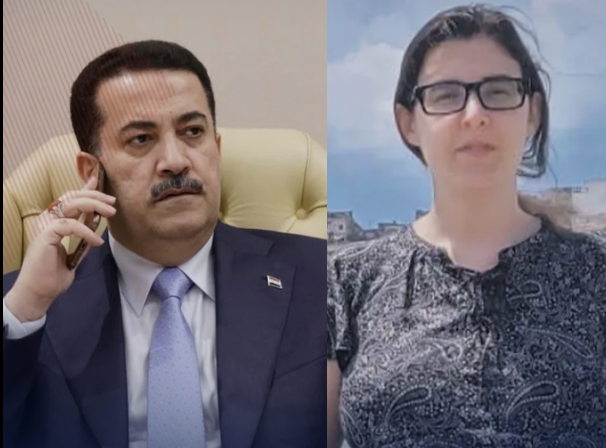The Rise of Salafi Islam in Azerbaijan
The Rise of Salafi Islam in Azerbaijan
After the demise of the Soviet Union and the emergence of an ideological vacuum, Azeri society began to embrace religion and observe long forgotten Islamic traditions. Thousands of missionaries from Arab countries, Iran and Russia converged on the republic to help “estranged” Muslims better understand their religion. Salafis, adherents of the ultra-orthodox branch of Islam, were among them. Many articles and news reports have been published about the activities of the Salafis in Azerbaijan, but most of them tend to be biased and superficial. Journalists, the government, and the official Shi’a clergy have all helped to create a negative public opinion on Salafis and tend to present them as either terrorists, heretics or both. Many Azeris often refer to Salafis in a derogatory way, dismissing them as Wahhabis, sakkalilar (bearded people) or garasakkalilar (black-bearded people). This carefully planned smearing campaign notwithstanding, the numbers and influence of Salafis is in fact steadily growing in Azerbaijan. Salafi ideas are becoming increasingly popular among the younger generations of Azerbaijan in particular. In Baku alone, which is the ultra-secular capital of Azerbaijan, the number of Salafis has reportedly reached 15,000. [1]
The first Salafi missionaries arrived in Azerbaijan from the northern Caucasus in the mid-1990s. The majority of them came from Chechnya and Dagestan where the Salafis had some influence, in large measure due to the Russian-Chechen wars. For a short while, Salafis made some inroads in Chechnya and were even able to create their own self-ruled area in the Dagestani villages of Karamaxi and Chobanmakhi. However, Salafis did not stop in Chechnya and Dagestan but extended their activities into Azerbaijan. Initially, they did not gain wide support among Azeris, as nationalism and pan-Turkism were much more popular than Islam. Moreover, in the immediate aftermath of the collapse of the USSR, Azeri society was not as deeply impoverished and divided as today. In addition, 65-70% of Azeris are adherents of Shi’a Islam, and hence have little regard for Salafi ideas. The Shi’a Muslims of Azerbaijan – for both historical and cultural reasons – are heavily influenced by Iran, a country whose government is widely regarded as the archrival of Salafis. Given Azerbaijan’s Shi’a complexion, the religious Sunnis of rural northern Azerbaijan form the primary constituency of Salafism in the country.
The second wave of Salafi expansion started in 1999, with the beginning of the Second Russo-Chechen war. The Russian military command tried to push Chechen rebels – particularly those of a Salafi orientation – out of the northern Caucasus into neighboring Georgia and Azerbaijan. Thus, some of the 8,000 Chechen refugees that arrived in Azerbaijan in 1999-2000 were persecuted Chechen Salafis.
Meanwhile, missionaries from the Persian Gulf countries dramatically increased their activities in Azerbaijan. By 2003, 65 new Salafi-controlled mosques had been established in Azerbaijan. One of the largest Salafi mosques in the country is the Abu Bakr mosque. Built in 1997 in Baku by the Azeri branch of the Kuwaiti society Revival of Islamic Heritage, Abu Bakr became one of the most successful mosques in Azerbaijan. While on average the Shi’a or Sunni mosques are able to attract approximately 300 people for Friday prayers, the number of people visiting the Abu Bakr mosque typically reaches 5,000 to 7,000 people. [2] The Imam of the Abu Bakr mosque is Gammet Suleymanov, a graduate of the World Islamic University of Medina that is a leading center for the study and export of Salafism.
There are essentially three factors that are driving the expansion of Salafism in Azerbaijan. Firstly, the overwhelming majority of indigenous Salafis are Sunnis and from the ethnic minorities. This constituency sees Salafism as a counter-balance to growing Iranian influence in Azerbaijan. Secondly, the rapid polarization and impoverishment of Azeri society has led to a pervasive disillusionment with traditional institutions and modern Western democratic ideas. Salafis have cleverly tapped into this pool of profound discontent; frequently criticizing the corruption of the government, the decline of morality and traditions, as well as the rise of criminality in the country. [3] Thirdly, Salafis tout the universalistic qualities of their ideology, and the fact that it supposedly transcends all Islamic sects and traditions. This is particularly appealing in Azerbaijan where sectarian rivalry between Shi’as and Sunnis has been on the rise.
Not surprisingly the government of Azerbaijan does not condone either Salafism or its adherents. In the mid-1990s, the Azeri government tolerated Salafis, fearing that intolerance would irritate the rich clergy of the Persian Gulf states. From 2001 to 2003, however, the situation changed dramatically as the Azeri government started to persecute the Salafis. One of the main reasons for this policy shift was the rapidly increasing number of Salafi mosques. Another reason was the Salafi community’s preference for electing their emirs themselves rather than allowing the government to appoint them. But arguably the most important reason is the Salafis’ serious opposition to the current autocratic Azeri regime. In their preaching, Salafis blame the government for a number of failures, ranging from the defeat in the Karabakh conflict with Armenia to the moral decay of society. Alarmingly for the Azeri establishment, Salafis do not make a secret of their aspirations to acquire political power in Azerbaijan. [4]
Salafis attracted the attention of Azeri law-enforcement bodies and security agencies from the moment they appeared on the scene. In early spring of 2001, the Court on Heavy Crimes sentenced 12 Azeris who aspired to fight in Chechnya. During the trial, the emir of the Abu Bakr mosque, Suleymanov, was summoned to the court to give testimony on the case. All the would-be mujahideen had been frequent visitors of the Abu Bakr mosque and were recruited there by Chechen rebels. Another trial concerning the Pan-Islamic Hizb-ut Tahrir organization also revealed that its members had visited the Abu Bakr mosque. In May 2002, the deputy minister of national security, Tofiq Babayev, stated that a number of Arab countries were interested in spreading radical Wahhabism in Azerbaijan. According to Babayev, over 300 Azeris had been trained in Wahhabi centers in Dagestan. The deputy minister identified three stages in the effort to make Wahhabism a grassroots movement in Azerbaijan. First there is the spread of Wahhabi literature and the provision of financial assistance to potential activists. The second stage involves the efficient training of the activists, and the final stage deals with the mobilization of active members for acts of terrorism designed to destabilize the state. [5]
By the end of 2001, Azeri authorities launched an unofficial campaign against the Salafis. Taking into consideration that large groups of Salafis are Chechens, the authorities tried to create unfavorable conditions for Chechen refugees. As a result, Aslan Maskhadov, the slain leader of the Chechen resistance advised Chechens to leave Azerbaijan. Simultaneously, the authorities started a ruthless campaign against the Azeri Salafis. For a short while, many mosques were shut down and regional police forces were instructed to crush Salafi cells by any means necessary.
Salafism in Azerbaijan poses several serious challenges to the Azeri establishment and potentially to the United States. The proliferation of Salafi ideas among religious and ethnic minorities could create powerful centrifugal forces that will in due course threaten the national unity of Azerbaijan. Contrary to their own propaganda, the Salafis are exacerbating sectarian tensions in the country. They have already destroyed several Shi’a worshiping places, thus creating ill-feeling, which might in turn be directed at the minority Sunni community. In the very worst case scenario, serious violence directed toward the majority Shia community may provoke some form of Iranian intervention, not least because the Iranians are anxious to curtail Salafi influence in Azerbaijan. But more alarmingly perhaps, the Salafis’ skilful exposure and manipulation of the establishment’s incompetence, coupled with the increasing impoverishment of the country, may make them a powerful political force in the mid term. This will inevitably lead to a harsh security crackdown, which might in turn provoke serious acts of terrorism in the country. Aside from destabilizing the government, the risks to the United States, which has made considerable diplomatic, economic and security investments in Azerbaijan, are self-evident.
The only effective measures the government can undertake is to gradually diminish the influence of Salafi ideology through tight control over foreign missionary work; implementation of social and political reforms and initiation of Salafi-Sunni-Shi’a dialogue to reduce sectarian tensions in society. Otherwise, Azerbaijan may soon be faced with the threat of Islamic terrorism.
Notes:
1. Azeri official lauds shrinking clout of missionaries. Azerbaijan TV station ANS, December 28, 2004.
2. Interview with Imam of Abu Bakr mosque. Kavkazskiy Vestnik. 05/24/04. www.kvestnik.org.
3. Yunusov, Arif. (2004) Islam in Azerbaijan. Pp. 260-261, Baku, Azerbaijan
4. Wahabbis are planning to participate in parliament elections. Zerkalo Newspaper. www.zerkalo.az May 17, 2005.
5. TURAN News Agency. www.turaninfo.com.


